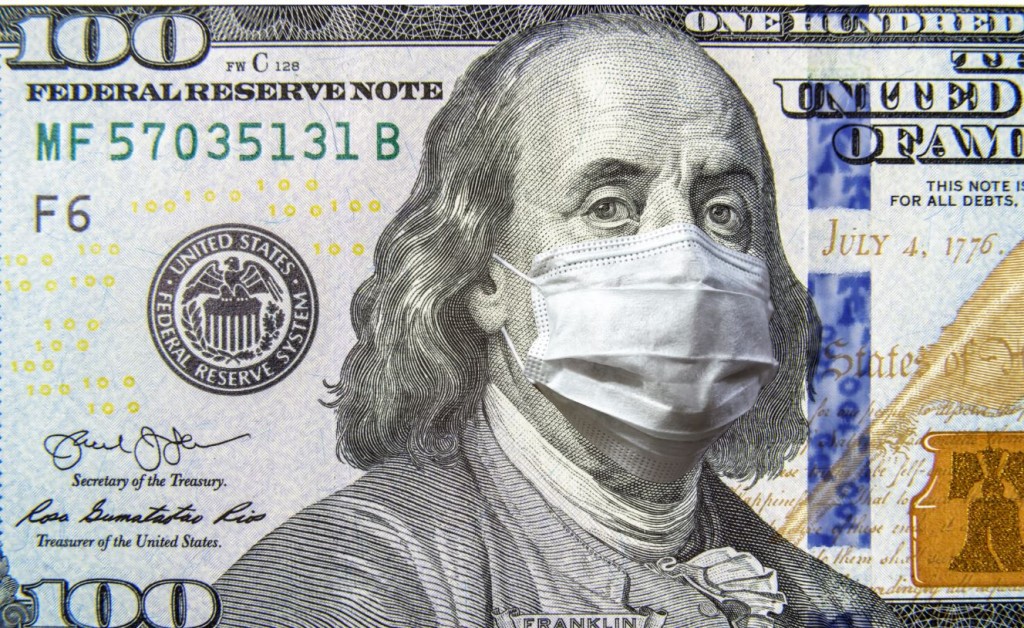
Archive for June, 2020
How Leaders Inspire Even in a Time of Crisis
I’m sharing a recent Inc. Real Talk Business Reboot Webinar with Simon Sinek.
Learn how to embrace an infinite mindset and strategies to lead your team through these difficult times and into the new Abnormal.

Inc. Real Talk Business Reboot:
Leading Through Times of Crisis and Change
Sinek teaches leaders unconventional ways of thinking, acting, and communicating to help inspire those around them. He believes great leaders are the ones who think long term rather than short term. In today’s ever-changing world, knowing the framework for leadership is more crucial than ever.
Tim Kinane
Please share this with a friend/colleague
SBA PPP How to Maximize and Beyond
I was a guest speaker on the inaugural Small Talk online series for the Business Development Board on Martin county. The interview is from late April and the key points remain valid as businesses transition back to a healthier economy.
The topic was How to Maximize Your Loan Funds. Along with reviewing how to best use SBA PPP funds, we discussed what to consider moving forward.
Key take away points:
SBA PPP Funds:
Keep communication open with banker and CPA.
- Be proactive
- Review options
- Ask questions
- Document expenditures
- Consider immediate and longer-term cash needs
- Multiple cash flows
Keep communication open with vendors:
- Terms
- Vendors are partners- you want them to be there to get you back on track
Businesses are resilient.
Generally, businesses need to find a way to react quickly to an issue or problem.
- How much money is needed
- What is the best way to spend money now
- How to make the next immediate decision
That is great during the time of crisis, but it is important to think future down the line.
Employees
They are the one who helped to build your business to where it is now, they will be vital to re-build your business.
Keep in contact- keep communication open.
Opportunities in times like these
Resilience of people in general, Americans and Small Business
Small Business is the engine that runs this country- Small Business is what will bring the economy back.
- Step back from the problem
- Explore all new opportunities as you move forward
- Challenge employees and help them find opportunities
Contact Tim 772-221-4499, to discuss strategies for your business.
PPP Loan Forgiveness Just Got Easier
By: Patrick Ungashick

To help our clients and other business owners and leaders respond to the unprecedented leadership disruptions caused by the coronavirus (COVID-19) outbreak, the team at NAVIX offers the following crisis management information series.
Responding to Coronavirus: PPP Loan Forgiveness Just Got Easier
On June 5th, the new Payroll Protection Plan Flexibility Act (PPPFA) was signed into law, with the purpose of making it easier for companies with PPP loans to secure loan forgiveness. The new law was passed in response to widespread confusion and criticism surrounding the rules pertaining to loan forgiveness. The new PPPFA law is intended to provide greater flexibility to the loan forgiveness process, in order to help the millions of businesses and their owners survive the economic challenges created by the virus.
The important PPP loan forgiveness changes are:
1. More Time to Spend the PPP Loan Proceeds
The most significant change is that companies now have more time to spend the loan proceeds. Before the new PPPFA law, borrowers had only eight weeks (called the “covered period”) starting upon receipt of the loan to spend the funds. That pressured many companies to spend PPP funds more quickly than would best help them through the coronavirus crisis. Now, borrowers have until the earlier of either: (1) 24 weeks from the loan origination date, or (2) December 31, 2020, to spend PPP funds.
However, under the 24-week covered period, companies will have to maintain the number of FTE employees for about three times longer (24 weeks instead of eight weeks) to maximize loan forgiveness. To help employers address this, borrowers who received PPP funds before June 5th (when PPPFA was signed into law) can opt to remain with an eight-week covered period, if advantageous.
2. More Flexibility for How PPP Proceeds are Spent
The next important change is that the new PPPFA law reduces the amount that companies must spend on payroll costs to qualify for loan forgiveness. Previously, PPP borrowers had to spend at least 75% of the loan proceeds on eligible payroll costs. Under the new law, companies must spend at least 60%. This means that forgivable non-payroll expenses can now be up to 40% of spending, increasing from 25%.
PPPFA also clarifies if borrowers are required to spend a minimum amount of loan proceeds. The new law clearly states that in order to be eligible for any forgiveness, a borrower must spend at least 60% of its total PPP loan proceeds towards payroll costs as defined under the CARES Act. Meaning, a borrower is not eligible for any loan forgiveness if it spends less than 60% of its total PPP loan amount.
3. More Time to Pay Back the PPP Loan
Another critical change is that borrowers now have five years, an increase from two years, to repay the PPP loan. The loan interest rate remains unchanged at 1.0%.
4. Extended Safe Harbor to Preserve PPP Loan Forgiveness
The new PPPFA law expands the opportunities for employers who experience a reduction in employee headcount or wages/salaries to maximize loan forgiveness through several means:
- Initially, PPP provided a “safe harbor” which permitted employers to avoid a reduction in loan forgiveness due to a significant decrease in employment and/or wage levels between February 15 and April 26, 2020, as long as the numbers of employees and employee wage levels are restored by June 30, 2020. The PPPFA extends this safe harbor restoration deadline from June 30 to December 31, 2020, giving employers six additional months to preserve loan forgiveness.
- PPPFA clarifies that loan forgiveness will not be reduced based on an inability to rehire employees if the borrower can document (1) written offers to rehire individuals who were employees of the organization on February 15, 2020; or (2) an inability to hire qualified employees for unfilled positions by December 31, 2020.
- Loan forgiveness will not be reduced for borrowers who are able to document a failure to return to the level of business activity as existed prior to February 15, 2020, due to compliance with coronavirus-related guidance for sanitation, social distancing, or safety requirements from the Health and Human Services (HHS), the Centers for Disease Control and Prevention (CDC), or the Occupational Safety and Health Administration (OSHA) between March 1 and December 31, 2020.
5. Potential Longer Deferment of Loan Repayment
Additionally, PPPFA extends the loan deferment period for many borrowers. Under the previous rules, borrowers could defer loan interest and principal payments for six months (although interest does accrue during the deferment). Now, borrowers can defer payments until the SBA determines the loan amount forgiven for that borrower. Given the new 24-week covered period, and given that lenders have 60 days to act and the SBA has 90 days to determine loan forgiveness, this could significantly increase the deferment period for many companies. However, PPP borrowers cannot just stall filing their loan forgiveness application in order to extend the deferral period. If a PPP borrower fails to apply for forgiveness within ten months after the PPP loan forgiveness covered period (which is now the earlier of 24 weeks from origination or December 31, 2020), the deferment period ends, and the borrower must begin making loan repayments.
6. Payroll Tax Deferral Expanded
Previously, companies that secured PPP loan forgiveness could not defer their employer share of payroll taxes. The new PPPFA law now allows all borrowers that receive loan forgiveness to defer payment of employer payroll taxes under Section 2302 of the CARES Act. (The payroll taxes typically due between now and through December 31, 2020, may be deferred with 50% payable by December 31, 2021, and the other 50% payable by December 31, 2022. Similarly, a self-employed taxpayer can defer paying 50% of his or her self-employment tax that would be due from now through the end of 2020 until the end of 2021 [25%] and 2022 [25%].)
However, keep in mind that this payroll tax deferral is different from the CARES Act employee retention tax credit. The PPP and the employee retention credit are still mutually exclusive, and companies may not apply for one if they use the other.
PPP Loan Forgiveness Application
To secure loan forgiveness, borrowers must complete and submit to their PPP lender the Small Business Administration (SBA) loan forgiveness application. Borrowers should carefully review the 11-page application, and consider the various definitions and options under the loan forgiveness process. Business owners are encouraged to consult their tax and banking advisors.
The NAVIX team has helped hundreds of business owners prepare for exit. We have also helped countless owners and leaders deal with recessions, liquidity crises, and economic upheaval. Our experience and perspective enable us to guide our clients through difficult times, such as these.
Contact Tim 772-221-4499, to discuss strategies for your business.
 Tim is a Consultant to Business, Government and Not-for-Profits Organizations specializing in innovative and challenging ways for organizations to survive, to thrive and to build their teams.
Tim is a Consultant to Business, Government and Not-for-Profits Organizations specializing in innovative and challenging ways for organizations to survive, to thrive and to build their teams.